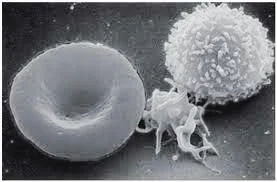Have you ever given any thought to the little heroes who maintain the life and functionality of our bodies? These microscopic soldiers called blood cells are essential to our general well-being. Join us as we explore the various blood cell types and their amazing functions on this fascinating journey.
Red Blood Cells: The Transporters of Oxygen
The red blood cells, or erythrocytes, are the most abundant type of blood cells. They are mostly responsible for carrying oxygen from the lungs to all of the body's tissues. The biconcave disc-like shape of these cells enhances their surface area for effective oxygen exchange. Hemoglobin is a protein found inside red blood cells that binds to oxygen molecules. The distinctive red color of blood is caused by hemoglobin's saturation with oxygen.
The defenders of the white blood cells
The immune system's soldiers are known as leukocytes, or white blood cells. They are in charge of guarding the body against pathogens and external invaders. White blood cells come in various varieties, each with a distinct purpose:
- Neutrophils:
These are the most prevalent kind of white blood cells, and when an infection arises, they react first. Along with other dangerous microbes, they take up and eradicate bacteria. - Lymphocytes: Adaptive immunity, which enables the body to identify and retain particular pathogens, depends on lymphocytes. T cells, which launch direct attacks on infected cells, and B cells, which generate antibodies, are among them.
- Monocytes: Large white blood cells called monocytes have the ability to develop into macrophages, which are specialized cells that take up and eliminate pathogens and debris.
- Eosinophils: Both parasitic infections and allergic reactions are influenced by eosinophils.
- Basophils: Histamine and other chemicals involved in allergic reactions are released by basophils.
Platelets: The Elements of Clotting
Platelets, also known as thrombocytes, are minuscule cell fragments that aid in halting bleeding. Platelets aggregate to form a clot when a blood vessel is injured, sealing the wound and halting blood loss. A blood clot forms as a result of a sequence of chemical reactions known as the clotting cascade, which is aided by substances released by platelets.
Conclusion
Our survival depends on blood cells. They assist in halting bleeding, fight infections, and transport oxygen. We can appreciate the amazing complexity of the human body by knowing the various types of blood cells and their functions.




